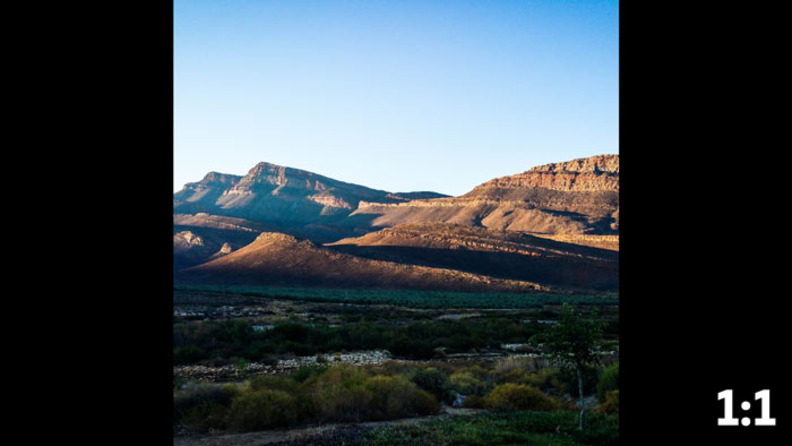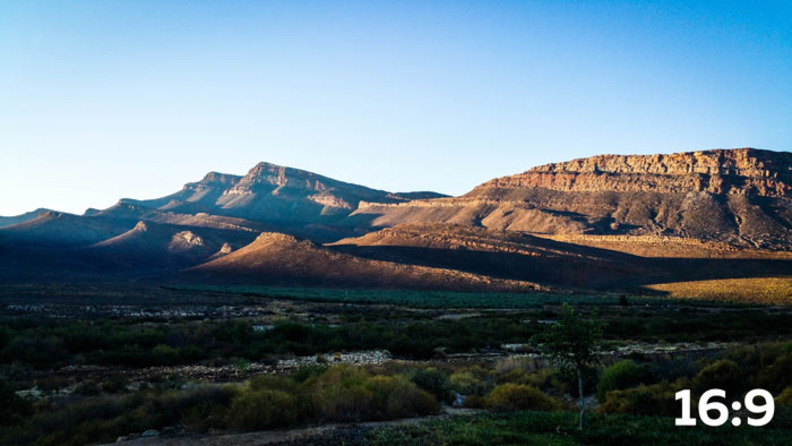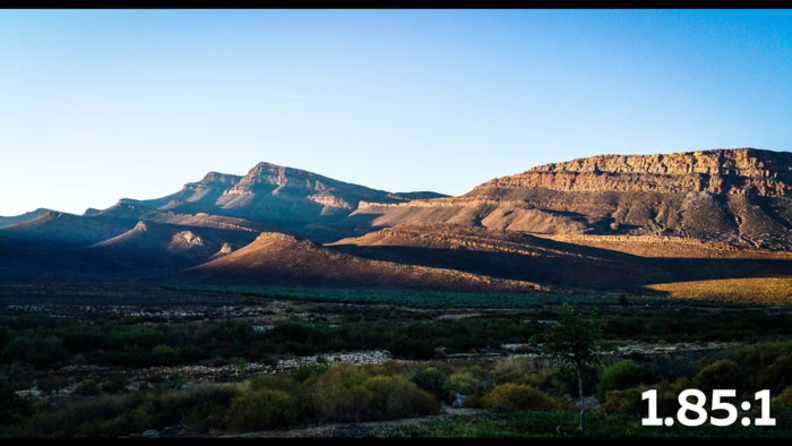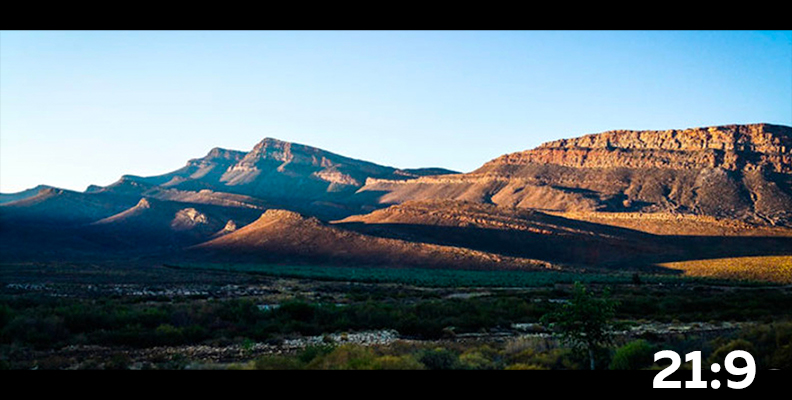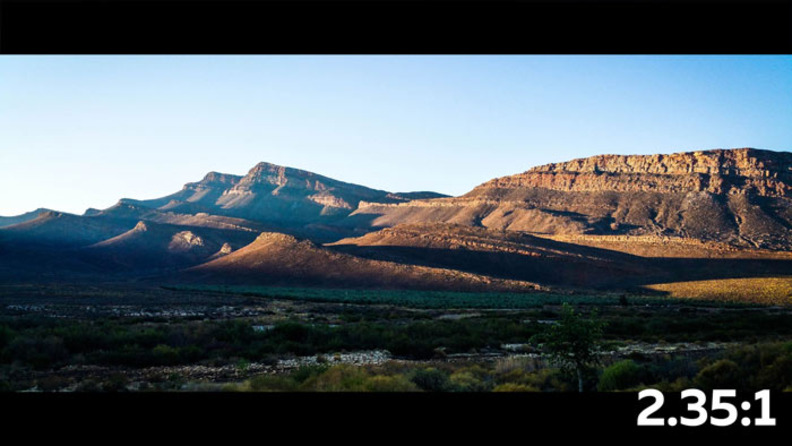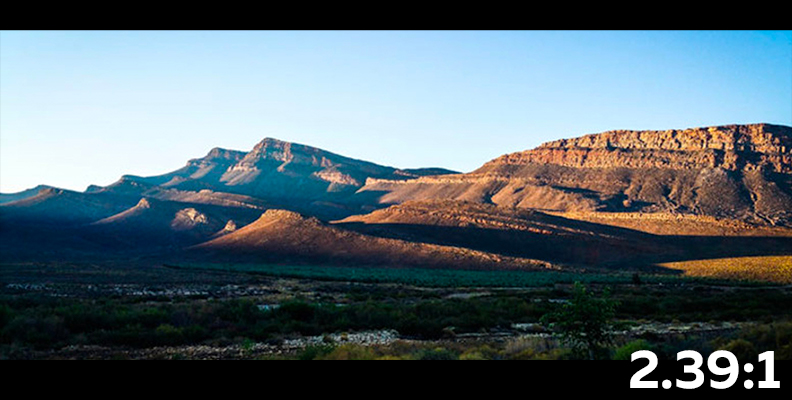Aspect ratio is something you’ll find in your camera settings or within the properties of your video editing software. It's typically defined by a pair of numbers whose meaning might initially seem hard to grasp.
In the realm of video recording, various aspect ratio options such as 1:1 (common for some medium format cameras), 4:3, 16:9, or even 9:16, the YouTube short aspect ratio, are made available by both video cameras and mobile phones as preset aspect ratios. These options can be accessed through your video editing software's project settings.
This metric essentially defines how a scene should be framed during shooting, how it will be projected, and, ultimately, how the audience will engage with the cinematic experience you created. The array of aspect ratios spans a wide spectrum depending on production types, broadcasting standards, and streaming platforms.
In today's article, I'll explain what aspect ratio is, the most common aspect ratios used in the industry, and how to decide which aspect ratio to use according to your production's needs.
Let’s dive in!
What is Aspect Ratio and Aspect Ratio Definition
The ratio refers to the relationship between two numbers, specifically, how many times one value is “contained” within the other. When dealing with aspect ratio in photography and filmmaking, this term refers to the proportional relationship between the width and height of an image or video. The aspect ratio is represented by two numbers separated by a colon. The two numbers you see are the width and height of the video.
It may seem that the aspect ratio equals the image size. However, it's more about the shape than its frame size. For example, the aspect ratio 1:1 means the image has the same width and height: it could be a square video of 100 x 100 pixels or 1200 x 1200 pixels with the same aspect ratio. Another common ratio is 16:9: a rectangular shape, delivering the widescreen aspect ratio we're used to seeing in high-definition displays and at the cinema.
The aspect ratio will determine how wide the video is and define the ideal screen size for display. Some screens benefit from a specific aspect ratio: for example, older televisions have a square screen, HD and 4K monitors are rectangular, and cinemas have wider screens.
-
Letterboxing and Pillarboxing in a Film
When filming in a certain aspect ratio, but the footage is watched on a device with a screen that does not match the original aspect ratio, the video will be stretched to fit the screen. Other times, if the image is wider than the screen, this will add black bars on the top and bottom of the screen (letterboxing). When the image has a taller image aspect ratio, the black bars will appear on the left and right sides of the screen (pillarboxing).
Aspect Ratio vs Video Resolution
Another misconception about aspect ratio is that it defines the resolution of the video. The resolution describes how clear and detailed an image looks: it’s determined by how many pixels are in the frame of the video. The most common high resolutions are 720p, 1080p, 1440p (2K), 2160p (4K), or 4320p (8K), all displayed in the same aspect ratio.
Remember, the aspect ratio determines the shape of the video, and the resolution is the amount of detail in the image.
Common Aspect Ratios
Different aspect ratios have been employed in broadcast TV, home theatres, and the film industry over the years. The following aspect ratios are the most common you will find and use in your filmmaking career. Aside from the most common 16:9, there are many other aspect ratios worth taking into consideration for your next creative project.
-
1:1 Aspect Ratio
![what is aspect ratio]()
The aspect ratio of 1:1 creates a square image. This aspect ratio is most common for social media posts on platforms such as Facebook, Instagram, and Twitter. It's ideal for display on mobile devices and works great for photos and video. If you are required to deliver a video specific to social media posts, the 1:1 aspect ratio is a good choice.
In films, you can record in a 1:1 as an artistic means to immerse the viewer in the story. In the Canadian film Mommy (2014), director Xavier Dolan chose to shoot in a 1:1 perfect square format to depict the characters' lives in a more detailed and personal way.
-
4:3 or 1.33:1 Aspect Ratio
![]()
The 4:3 aspect ratio, commonly known as Full screen or SD resolution, is slightly wider than the 1:1 aspect ratio, with common resolutions of 480p, 720p, and 1200p. It was the standard resolution for broadcast TV before high-definition television and widescreen monitors became popular, and most vintage film cameras record at a 4:3 aspect ratio.
The 4:3 aspect ratio is becoming obsolete as wider aspect ratios are becoming popular for TV displays. However, many video cameras and mobile devices offer a 4:3 aspect ratio that you can use to add a retro look to your productions.
-
16:9 or 1.78:1 Aspect Ratio
![]()
Since the arrival of high-definition technology, wider TV screens have entered the market, and people have replaced their older 4:3 displays with a wider aspect ratio of 16:9 to experience higher resolutions and to get the feeling of being in the cinema with a more immersive image.
The 16:9 aspect ratio is considered the standard aspect ratio for TV, movies, computer monitors, and streaming platforms, and most video cameras and mobile devices will record in a 16:9 aspect ratio by default.
A 16:9 aspect ratio is the perfect choice to record content for TV, YouTube, Vimeo, and home movies since most viewers watch TV and streaming platforms from a TV or mobile device that generally has a 16:9 display.
-
9:16 Aspect Ratio
![]()
The 9:16 aspect ratio is the vertical version of the 16:9. This is your go-to aspect ratio when you film content that’ll be watched on mobile phones or tablets. It’s best for social media platforms with vertical videos like Instagram reels, TikTok, and YouTube shorts.
-
1.85:1 Aspect Ratio
![]()
1.85:1 is another standard aspect ratio that's more common for cinema. It is wider than 16:9 and was originally used exclusively for movie theatre screens to provide a more immersive experience than TV and replace the 1.37:1 Academy ratio. Nowadays, it’s not uncommon to find TV shows using 1.85:1 to give a cinematic look to the production.
Whenever you shoot in a 1.85:1 aspect ratio and display it on a 16:9 screen, you will see the letterbox black bars at the top and bottom of the screen to compensate for the wider image.
-
21:9 Ultrawide Screen
![]()
Ultrawide screens and cinematic widescreen formats use the 21:9 aspect ratio, used to refer to aspect ratios between 2.33:1 and 2.40:1. This range includes the Cinemascope and Anamorphic aspect ratios, two of the common aspect ratios for movie theatres.
Content in the 21:9 aspect ratio displayed on a 16:9 screen will add thin black bars on top and bottom to show the whole image. On the other hand, content in a 4:3 or 16:9 aspect ratio will show black bars on the left and right sides.
Though 16:9 is way more common, the 21:9 ratio is often used in gaming, multitasking screens, and Blu-ray products.
-
2.35:1 Aspect Ratio: Cinemascope
![]()
A 2.35:1 aspect ratio or Cinemascope is used mainly for cinema. A wide range of film aspect ratios are usually considered within Cinemascope, ranging from 2.35:1 and up to 2.6:1. It allows filming immersive landscapes with accuracy, creating an evocative visual effect.
-
2.39:1 Aspect Ratio: Anamorphic
![]()
Another common aspect ratio in cinema is 2.39:1, also called the Anamorphic widescreen format. It’s a wider screen than Cinemascope and creates a dramatic effect for movies projected in movie theatres. This aspect ratio is preferred when shooting a panoramic scene with a large landscape.
2.76:1 Aspect Ratio
![]()
Some Hollywood directors often use wider aspect ratios to create a cinematic look and give the viewers an experience they will only have at the movie theatre. Movies in this aspect ratio look fantastic on IMAX screens, but they might not deliver the same cinematic feel when displayed on a regular 16:9 screen.
The advantages of a wider ratio are a cinematic and often retro style and the extra space to capture landscapes more vividly. On the other hand, a narrow width can focus the attention on a certain character, emphasize the interaction between two people, or pinpoint a character within their surroundings.
Movies filmed in the wide 2.76:1 aspect ratio include The Hateful Eight (2015), Ben-Hur (1959), and The Greatest Story Ever Told (1965).
What Aspect Ratios Should I Use?
Choosing the right aspect ratio will depend on how you envision your movie and where it will be displayed.
Depending on your vision, you can choose an aspect ratio that will fit the scenes and atmospheres. Ask yourself what you'll be shooting: landscapes? Open or closed locations? Multiple subjects? Think about how every environment will drive or impact the story you want to tell.
There’s no golden rule as to what aspect ratio you should or should not use. If you want to use the Academy ratio because it fits your project’s purpose, you can certainly use it. You can even use multiple aspect ratios in the same film, like in The Grand Budapest Hotel (2014), which switches aspect ratios during the movie to represent the aspect ratio used in each era of time in the story. These artistic choices can make a difference in the engagement of the audience.
As a beginner, sticking to the standard 16:9 aspect ratio can be a safe option. It fits film, television, web content, and popular streaming platforms like YouTube. Besides, most TV screens and PC monitors can fit this aspect ratio perfectly. But if your film will be featured in the cinema, you could shoot in a 1.85:1 or even 2.39:1 aspect ratio to give your movie a more cinematic feel.
The most straightforward option is to use 1.85:1 and 2.39:1 for films that will be projected in movie theatres and 16:9 for television, web, and streaming platforms. As you learn more about aspect ratio, you can experiment with all the other options to create a unique visual signature.
Here are a few movies that have unusual aspect ratios so you can get some inspiration:
-
Napoleon (1927) is in a 4:1 aspect ratio.
-
How the West Was Won (1962) was originally projected in a 2.59:1 aspect ratio and 2.89:1 in newer releases.
-
Interstellar (2014) uses a wider aspect ratio to represent how big the space is and smaller aspect ratios for interior or smaller room shots.
-
The Lighthouse (2019) was filmed in 1.19:1.
-
The Suicide Squad (2021) is in a 1.90:1 aspect ratio.
Final Words
Choosing the best aspect ratios for your project will depend on the story you're trying to tell and the emotions you want to evoke in your audience. Understanding how the aspect ratio will affect the pace of your narrative and how the viewers will experience it will play a critical role in your filmmaking career.
As you experiment with aspect ratios, you can use this parameter to evoke different eras, realms, and locations and emphasize emotions and drama. The way you transition from one aspect ratio to the other will also impact the story: a slow transition or a drastic cut will convey totally different reactions.
Choose an aspect ratio that fits your story. Don't choose one just because it's the standard.
Good luck!





